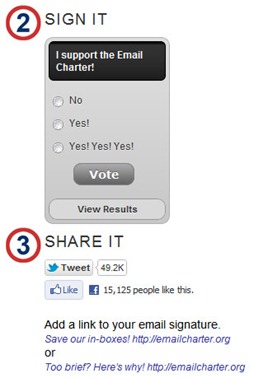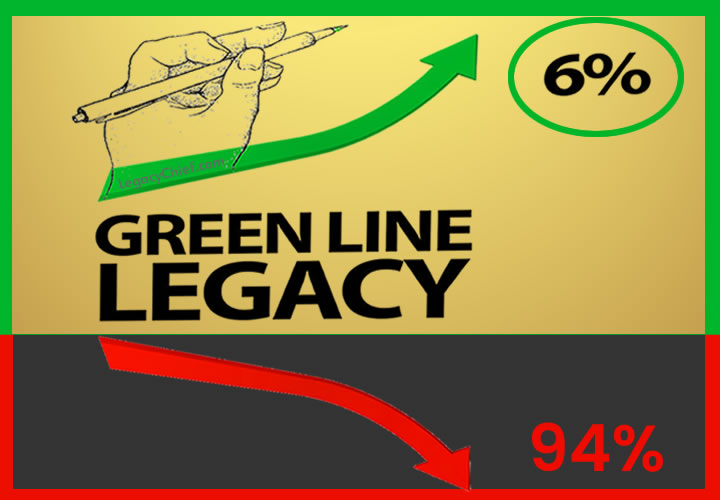Likes UP: Email Charter to End Email Spiral

Email: The Problem
The relentless growth of in-box overload is being driven by a surprising fact:
The average time taken to respond to an email is greater, in aggregate, than the time it took to create.
This is counter-intuitive because it’s quicker to read than to write. So you might assume a typical email takes a few minutes to write, but only a few seconds to read. However, five other factors are outweighing this.
– The act of processing an email consists of much more than just reading. There is a) scanning an in-box, b) deciding which ones to open, c) opening them, d) reading them e) deciding how to respond f) responding — which may well involve writing an email of similar length back g) getting back into the flow of your other work. So the arrival of even a two-sentence email that is simply opened, read and deleted can take a full minute of your available cognitive time.
– Many emails contain open-ended questions that can’t rapidly be responded to. “What’s your opinion on all this?” “How should I move forward?” Easy to ask, hard to answer.
– Many emails are sent to multiple recipients. It takes no time to add another cc, but each additional recipient multiplies the total response time demanded.
– Many emails contain additional text that has been copied and pasted from other documents or a lengthy thread that is simply being re-forwarded.
– Many emails contain links to web pages or videos. Easy to add a link. But it may take minutes to view it.
Now consider that the amount of time people are spending on line is increasing. It is, after all, a seductive place to hang out. As social creatures, it’s the most natural thing in the world to want to use that time to reach out to others. What is more the range of ‘distractions’ online is growing every year. And it’s easy (and often wonderful) to share them with our friends and colleagues. Just copy a link, paste and send… and boom, the world’s cognitive capacity takes another hit!
The result of all this is a deadly upward spiral. Every hour you spend writing and sending email is probably consuming more than an hour of the combined attention of your various recipients. So without meaning to, we’re all creating an ever growing problem for each other.
An email inbox has been aptly described as the to-do list that anyone in the world can add an item to. If you’re not careful, it can gobble up most of your working week. Then you’ve become a reactive robot responding to other people’s requests, instead of a proactive agent addressing your own true priorities. This is not good.
This phenomenon can be thought of as a potent modern tragedy of the commons. The commons in question here is the world’s pool of attention. Email makes it just a little too easy to grab a piece of that attention. The unintended consequence of all those little acts of grabbing, is a giant rats nest of voracious demands on our time, energy and sanity.
How might the Email Charter solve this?
See the solution with the 10 Rules.
10 Rules to Reverse the Email Spiral
1. Respect Recipients’ Time
This is the fundamental rule. As the message sender, the onus is on YOU to minimize the time your email will take to process. Even if it means taking more time at your end before sending.
2. Short or Slow is not Rude
Let’s mutually agree to cut each other some slack. Given the email load we’re all facing, it’s OK if replies take a while coming and if they don’t give detailed responses to all your questions. No one wants to come over as brusque, so please don’t take it personally. We just want our lives back!
3. Celebrate Clarity
Start with a subject line that clearly labels the topic, and maybe includes a status category [Info], [Action], [Time Sens] [Low Priority]. Use crisp, muddle-free sentences. If the email has to be longer than five sentences, make sure the first provides the basic reason for writing. Avoid strange fonts and colors.
4. Quash Open-Ended Questions
It is asking a lot to send someone an email with four long paragraphs of turgid text followed by “Thoughts?”. Even well-intended-but-open questions like “How can I help?” may not be that helpful. Email generosity requires simplifying, easy-to-answer questions. “Can I help best by a) calling b) visiting or c) staying right out of it?!”
5. Slash Surplus cc’s
cc’s are like mating bunnies. For every recipient you add, you are dramatically multiplying total response time. Not to be done lightly! When there are multiple recipients, please don’t default to ‘Reply All’. Maybe you only need to cc a couple of people on the original thread. Or none.
6. Tighten the Thread
Some emails depend for their meaning on context. Which means it’s usually right to include the thread being responded to. But it’s rare that a thread should extend to more than 3 emails. Before sending, cut what’s not relevant. Or consider making a phone call instead.
7. Attack Attachments
Don’t use graphics files as logos or signatures that appear as attachments. Time is wasted trying to see if there’s something to open. Even worse is sending text as an attachment when it could have been included in the body of the email.
8. Give these Gifts: EOM NNTR
If your email message can be expressed in half a dozen words, just put it in the subject line, followed by EOM (= End of Message). This saves the recipient having to actually open the message. Ending a note with “No need to respond” or NNTR, is a wonderful act of generosity. Many acronyms confuse as much as help, but these two are golden and deserve wide adoption.
9. Cut Contentless Responses
You don’t need to reply to every email, especially not those that are themselves clear responses. An email saying “Thanks for your note. I’m in.” does not need you to reply “Great.” That just cost someone another 30 seconds.
10. Disconnect!
If we all agreed to spend less time doing email, we’d all get less email! Consider calendaring half-days at work where you can’t go online. Or a commitment to email-free weekends. Or an ‘auto-response’ that references this charter. And don’t forget to smell the roses.
Read it. Sign it and Share it!

http://emailcharter.org/



